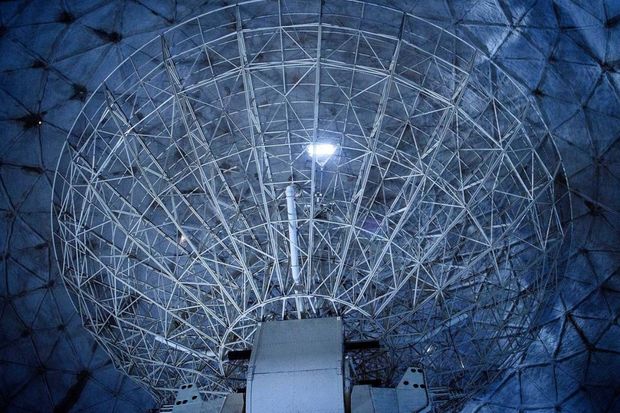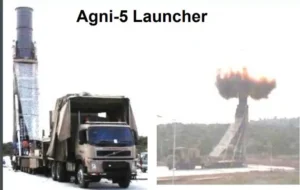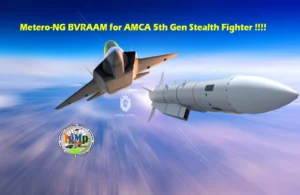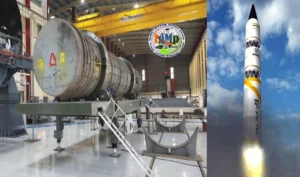OPED By Vaishali Basu Sharma
A new landmark radar initiative will allow the US, UK, and Australia to better detect, track, and identify objects in deep space. This is one of the agreements the United States, Australia, and Britain’s defense chiefs agreed upon as they met in California on December 1.
The defense chiefs of the three nations had gathered at the American military’s defense technology hub in Silicon Valley– the heart of the US tech sector — to explore possibilities for cooperation in military applications of high technology — from underwater drones to electronic warfare, as part of a broader effort to counter China’s rapidly growing influence in the Indo-Pacific.
The US Defense Secretary Lloyd Austin met with Australian Defense Minister Richard Marles and British Secretary of State for Defense Grant Shapps. He held extensive discussions covering high-tech cooperation on deep space radar, Artificial Intelligence, and quantum computing systems to bolster their respective and collective armed forces in the face of growing global threats, especially from increasing China capabilities.
US-Led AUKUS To Deploy Deep Space Advanced Radar Capability (DARC) To Counter China’s Space Weaponization
These discussions were held as part of the tri-nation AUKUS arrangement, a security partnership for the Indo-Pacific region between Australia, the United Kingdom, and the United States.
Enhanced trilateral cooperation has been driven by growing concerns about China’s burgeoning defense spending and rapidly expanding military presence in the Indo-Pacific. Emphasizing the importance the US attaches to collaboration with its allies in the Indo-Cooperation, Secretary of Defense Lloyd Austin, in his statement to the media, said, “Today just underscores that AUKUS is a once in a generation opportunity that will promote peace and security throughout the Indo-Pacific.”
One of the exciting outcomes of the discussions at the Defense Innovation Unit headquarters was the unveiling of the Deep Space Advanced Radar Capability (DARC) program.

DARC is set to provide 24/7, all-weather capabilities that will increase AUKUS nations’ ability to characterize objects deep in space up to 22,000 miles (36,000 kilometers) away from Earth.
Setting up three ground-based radars, a joint global network, will assist in critical space traffic management and contribute to the worldwide surveillance of satellites in deep space.
The unique geographic positioning of the US, UK, and Australia implies that DARC can provide global coverage, including detecting potential threats to defense or civilian space systems. The first radar, to be built in Western Australia, will be operational by 2026, and the others will be completed by 2030.
The initiative for space comes at a crucial time worldwide; increasing economic and military dependence on space creates a vulnerability that is an attractive target for adversaries.
Regarding DARC’s defense benefits, UK Defence Secretary Grant Shapps said, “As the world becomes more contested and the danger of space warfare increases, the UK and our allies must ensure we have the advanced capabilities we need to keep our nations safe.”
With technology proliferation, widening accessibility to space, globalization of space programs and industries, and commercialization of space systems and services, the possibility of foreign adversarial knowledge about space systems increases.
This know-how gives the adversary a decided advantage that can lead to deception, disruption, denial, or destruction of US space systems in the event of worsening relations.
Aside from a military standpoint, the proposed DARC will be able to monitor and protect the essential services that rely on satellites in space, including everyday aspects of life such as communications and navigation.
According to Grant Shapps, DARC will be “more sensitive, more accurate, more powerful and agile than anything that has gone before, giving us the ability to see beyond the clouds.”
Hailing the increased high-tech cooperation, Australian Defense Minister Richard Marles said the meeting “will be regarded as a critical moment in the history of Pillar Two of AUKUS, and that is the sharing and development of advanced technologies between our three countries.”

Today’s operation in space is no longer limited to global military powers. In reality, many nations can restrict, deny operations, or physically destroy space systems and the ground facilities that command and control them. Even from relatively unsophisticated optical, radar, and signal tracking systems, knowledge of a country’s satellite’s position and velocity can now be obtained.
China, for instance, can field space-based tracking systems to accurately locate objects in low Earth orbit (LEO) through air and theatre missile defense radars.
Space threats can take the form of direct threats to the US and its allies’ space systems and threats to military forces from foreign use of space systems. With greater reliance on space, coupled with the growing amount of information available about space systems, it is indeed timely that defensive space initiatives are being developed.
- Vaishali Basu Sharma is an analyst of strategic and economic affairs. She has worked as a consultant with India’s National Security Council Secretariat (NSCS) for nearly a decade. She is presently associated with the New Delhi-based think tank Policy Perspectives Foundation.
- The author can be reached at postvaishali (at) gmail (dot) com.








